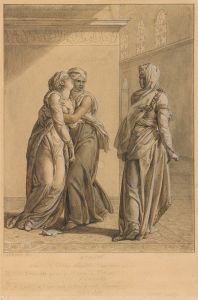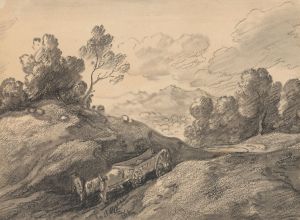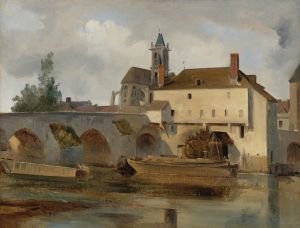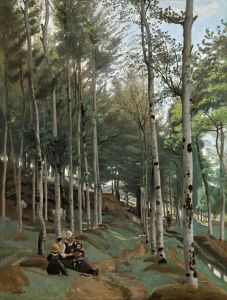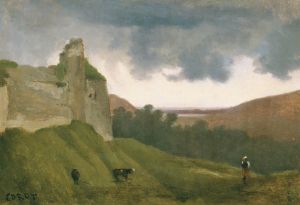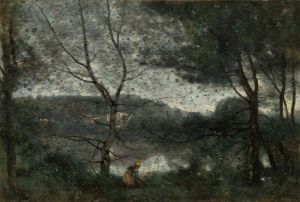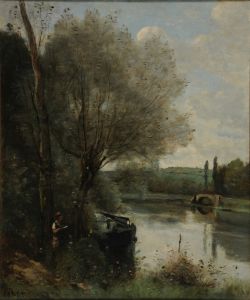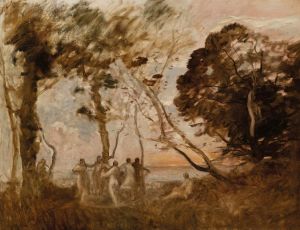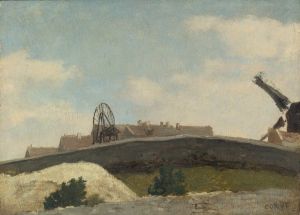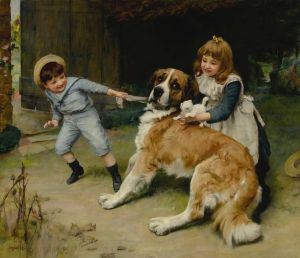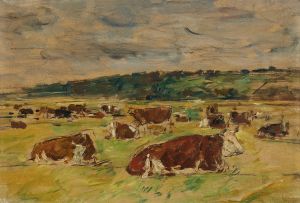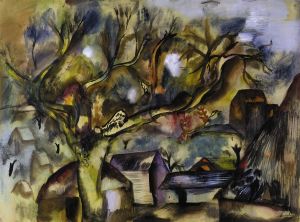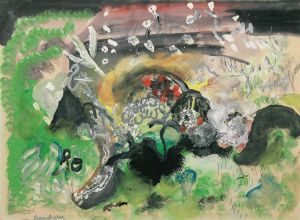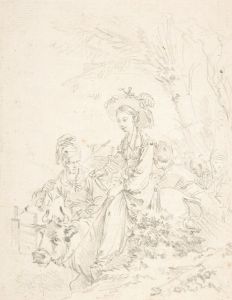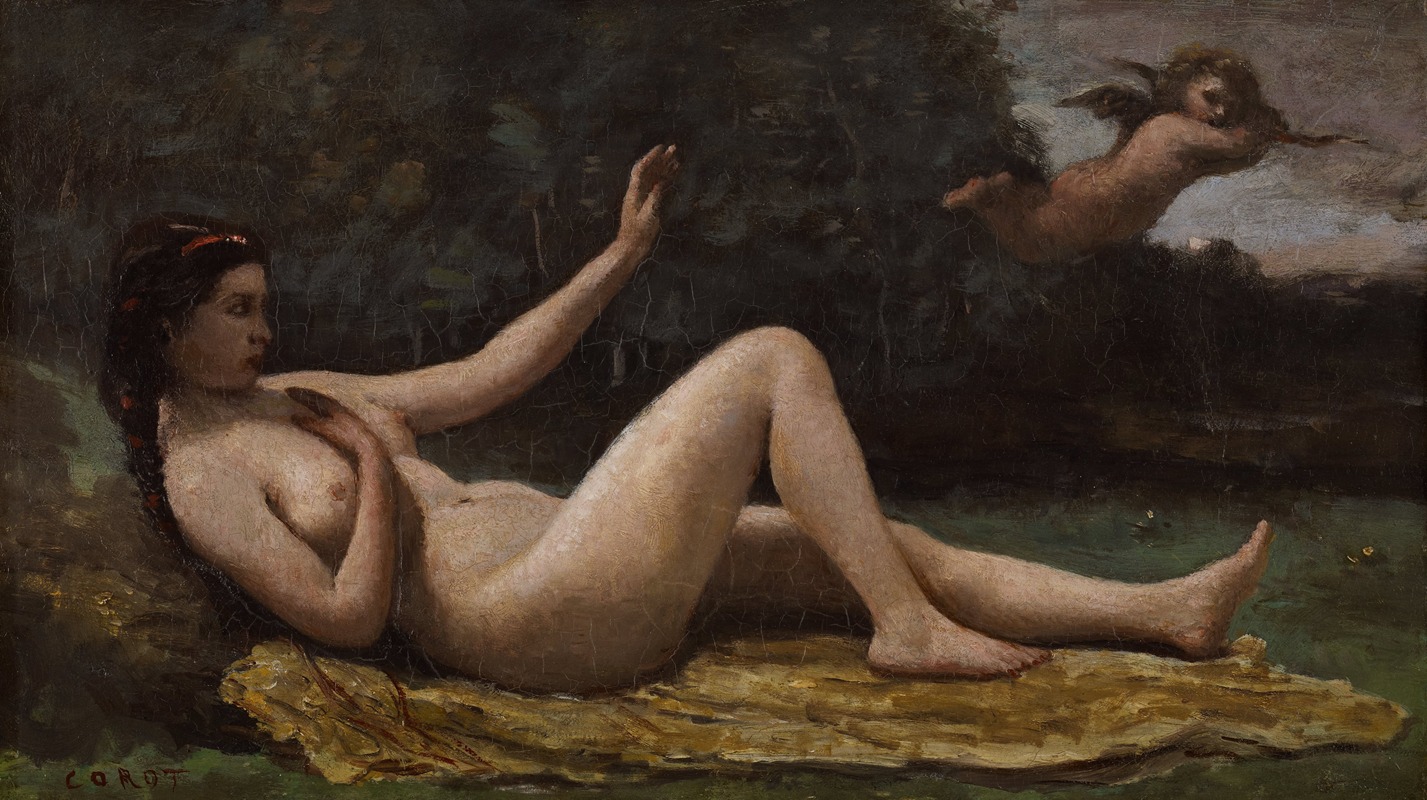
Evocation of Love
A hand-painted replica of Jean-Baptiste-Camille Corot’s masterpiece Evocation of Love, meticulously crafted by professional artists to capture the true essence of the original. Each piece is created with museum-quality canvas and rare mineral pigments, carefully painted by experienced artists with delicate brushstrokes and rich, layered colors to perfectly recreate the texture of the original artwork. Unlike machine-printed reproductions, this hand-painted version brings the painting to life, infused with the artist’s emotions and skill in every stroke. Whether for personal collection or home decoration, it instantly elevates the artistic atmosphere of any space.
Jean-Baptiste-Camille Corot, a pivotal figure in landscape painting, is renowned for his contributions to the Barbizon School and his influence on Impressionism. One of his lesser-known works, "Evocation of Love," exemplifies his mastery in capturing the ethereal qualities of light and atmosphere, though specific details about this painting are scarce.
Corot was born in Paris in 1796 and began his artistic career relatively late, after working in his family's textile business. He studied under Achille-Etna Michallon and Jean-Victor Bertin, both of whom were proponents of the neoclassical tradition. However, Corot's style evolved to embrace a more naturalistic approach, focusing on the transient effects of light and the poetic qualities of the landscape.
Throughout his career, Corot traveled extensively, painting en plein air in Italy and various regions of France. These travels greatly influenced his work, allowing him to develop a unique style that blended classical landscape traditions with a more modern sensibility. His paintings often feature serene, dreamlike scenes that convey a sense of tranquility and introspection.
"Evocation of Love" is believed to be one of Corot's many explorations of mythological and allegorical themes, a subject he frequently revisited. In such works, Corot often depicted figures in harmonious natural settings, emphasizing the connection between humanity and nature. His use of soft, diffused light and delicate brushwork creates an atmosphere of calm and contemplation, inviting viewers to immerse themselves in the scene.
Corot's technique involved building layers of thin glazes to achieve a luminous quality, a method that contributed to the atmospheric depth of his paintings. This approach is evident in "Evocation of Love," where the interplay of light and shadow enhances the emotional resonance of the composition. The painting likely reflects Corot's interest in capturing the ephemeral beauty of nature and the human experience within it.
While specific information about "Evocation of Love" is limited, it is consistent with Corot's broader body of work, which often blurs the line between reality and imagination. His landscapes are not mere representations of specific locations but rather idealized visions that evoke a sense of timelessness and universality.
Corot's influence on subsequent generations of artists, particularly the Impressionists, is well-documented. His emphasis on capturing the effects of light and atmosphere paved the way for artists like Claude Monet and Camille Pissarro, who further explored these elements in their work. Corot's ability to convey mood and emotion through landscape painting remains a significant aspect of his legacy.
In summary, "Evocation of Love" by Jean-Baptiste-Camille Corot is a testament to the artist's skill in blending naturalism with poetic expression. Although detailed information about the painting is limited, it embodies the qualities that define Corot's oeuvre: a harmonious integration of figures and landscape, a focus on light and atmosphere, and an overarching sense of tranquility. Through works like this, Corot continues to be celebrated as a master of landscape painting and a key figure in the transition from classical to modern art.





